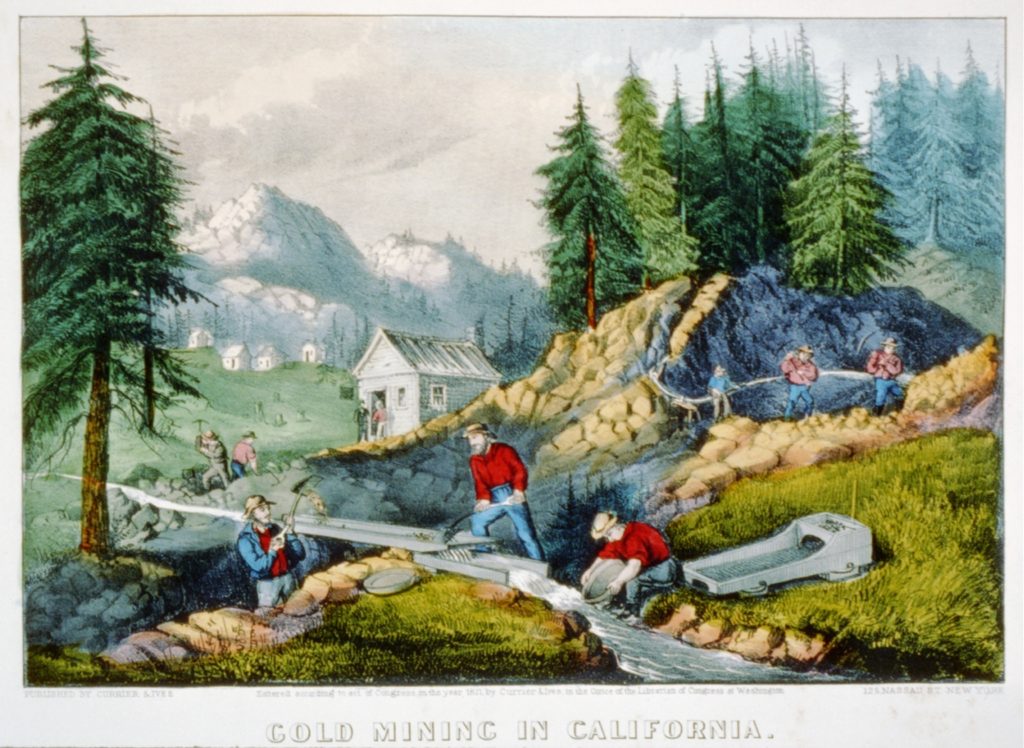By Connecticut Explored
In the early Republic, Connecticut’s economy was largely focused east and south. Connecticut’s was primarily a coastal maritime economy that depended on trade with England and the slavery economy of the South and the Caribbean. (A good illustration of this is “Justus Riley and Justice for Patty” about Wethersfield trader Justus Riley.)
But there were other forces at work. State Historian Walter Woodward, in “The Revolution of 1818” (Connecticut Explored, Fall 2018) writes,
By 1818 Connecticans’ high birth rates (the average family had 6 to 8 children) and the need to provide farmland for succeeding generations had resulted in most of the state’s farmers—by far the bulk of the population—having ever-smaller farms and increasingly tapped-out soils incapable of feeding the families who owned and worked them.
Even climate worked against the Connecticut farmer. The decade from 1810 to 1820 was the worst decade of a climatic period climatologists call The Little Ice Age. This four-century-long (1450-1850) period of global cooling created shorter growing seasons, longer heating seasons, and not infrequent food shortages and crop failures. In southern Connecticut, November snows regularly piled up over second-story windows, while New London harbor was covered in a 15-inch-thick sheet of ice as late as the second week of May. 1816 was the worst year of all, still called the ‘year without a summer.’
Nature wasn’t the only thing taxing farmers’ prospects in 1818. Connecticut’s system of taxation put a significantly higher burden on farmers than either the state’s merchants or manufacturers, many of whom were members of the ruling elite. …
The prospect of depleted land, falling temperatures, and excessive taxation produced a crisis so severe, many Connecticans concluded their only option was to pull up stakes and seek their fortunes elsewhere, in Vermont, New York, or, most likely, that part of northern Ohio called Connecticut’s Western Reserve (See “West of Eden,” Fall 2007).
By 1817 young families were leaving the state in droves, producing a crisis of worry for those who stayed. That year, Governor Oliver Wolcott Jr. told the Connecticut General Assembly, “An investigation of the causes which produce the numerous emigrations of our industrious and enterprising young men, is by far the most important subject which can engage our attention.”
Connecticans looked westward, and our state has many interesting connections to westward expansion. Here are a few.
Austin, Texas: Named for a Connectican’s Son
Austin, Texas was settled by Stephen Austin whose father, Moses Austin, was born in Durham, Connecticut. Moses Austin received a land grant from Spain in 1820 but died the following year before he could settle the area. More than 100 years earlier, Spain had colonized the area in conflict with the Native Americans. In 1821 the territory became part of Mexico after Mexico won its independence from Spain that year. Austin’s son Stephen Austin did settle the region—the Mexican government ratified Moses Austin’s land grant and initially encouraged American settlement in the region—and is called the “Father of Texas.” Stephen Austin was born in Virginia and raised in Missouri, but attended Yale College in New Haven, Connecticut.
But our state’s connection to the west started much earlier: The Charter of 1662
The First Frontier was North
By the second half of the 1700s, farmland in Connecticut had become scarce. As farmers’ sons came of age, they had to leave Connecticut to find land. Many headed north to what became Vermont. In fact, so many did so that for a short time, the territory was known as “New Connecticut.”
Connecticut’s Western Reserve
Find out why there are frontier towns named Suffield, Avon, Coventry, Litchfield, Orange, Vernon, Hartford, Chester, and Madison—in northeast Ohio—and why Cleveland, Ohio is named after Moses Cleaveland of Canterbury, Connecticut.
West of Eden: Ohio Land Speculation Benefits Connecticut Public Schools
Eunice Hanchet’s letters to her sister back in Suffield describe life on the frontier. The story includes an excerpt describing their two-room log house.
More resources about the Western Reserve: https://libguides.ctstatelibrary.org/hg/maps/westernlands
Connecticut’s Ties to the Trail of Tears
In 1824 and 1826, two Connecticut women, Sarah Northrup and Harriet Gold married Cherokee cousins John Ridge and Elias Boudinot, who had come to Cornwall, Connecticut to study at at the Foreign Mission School there. Their stories are tragically intertwined with the Trail of Tears, as this story reveals.
Connecticans in the Gold Rush
Connecticans got gold rush fever and headed west to make their fortunes. John E. Brockett of North Haven recorded his experience searching for gold in Northern California from 1849 to 1853 in letters home.
More Connecticans in the American West
Read our entire Winter 2016-2017 issue about Connecticans in the American West, including
“Sam Colt Mines the Arizona Territory”
“How Connecticut-Made Guns Won the West”
“Catherine Beecher Educates the West”

